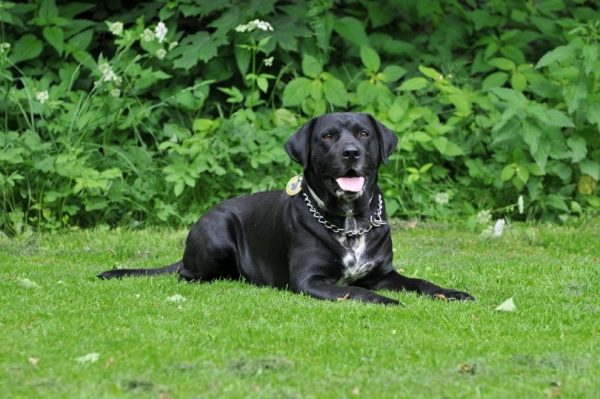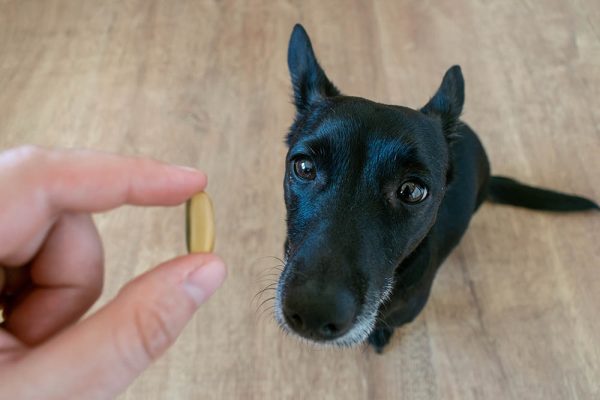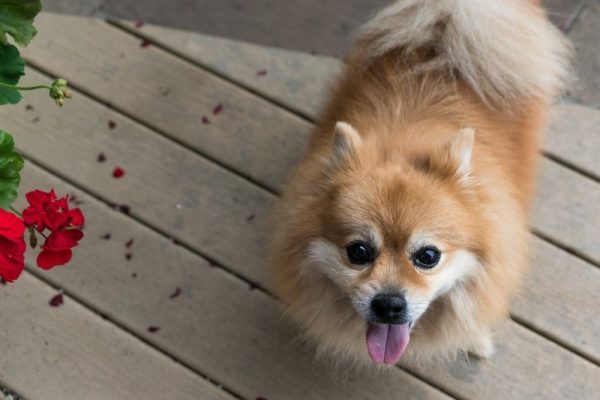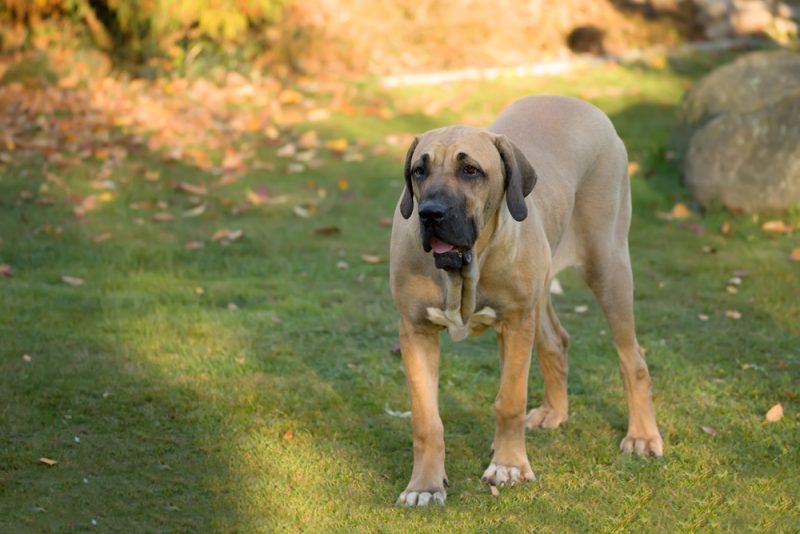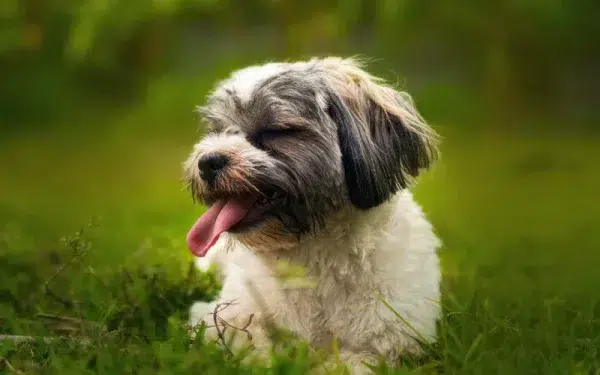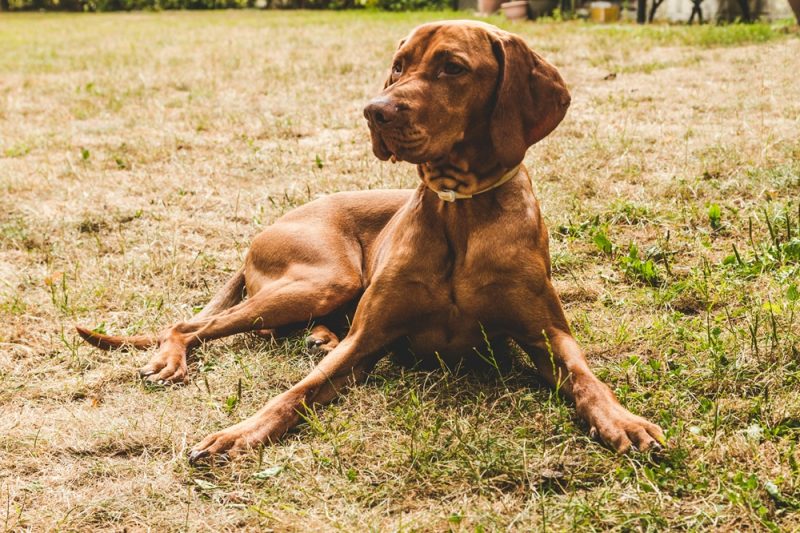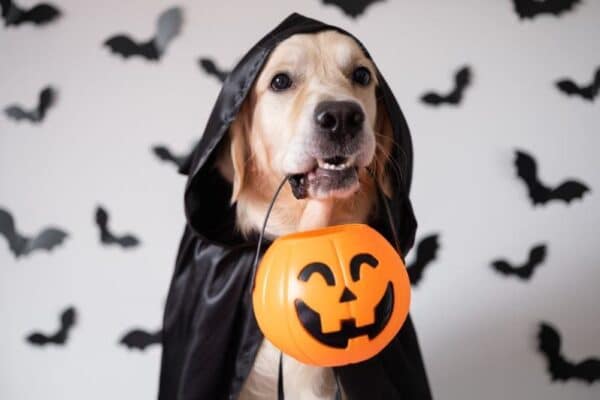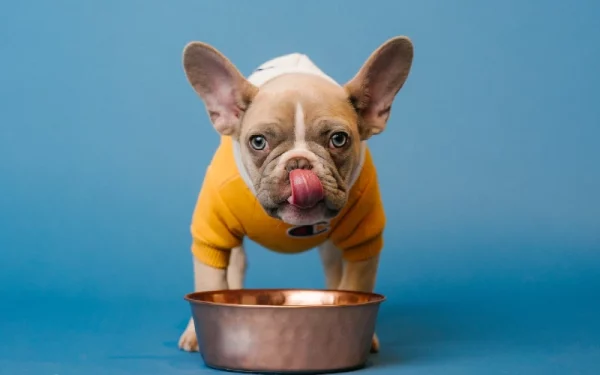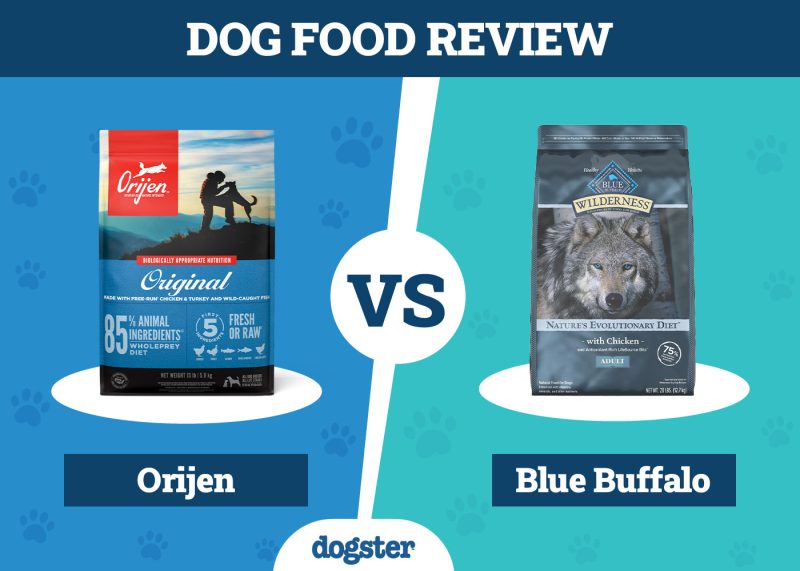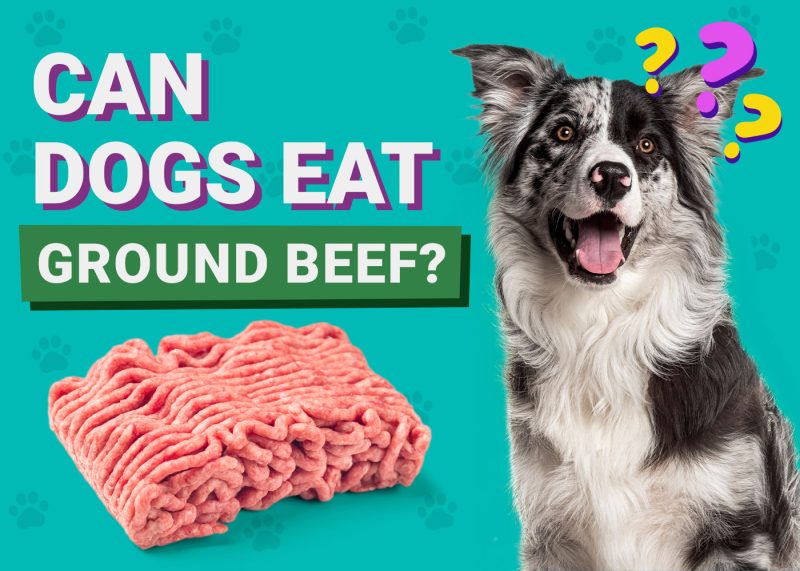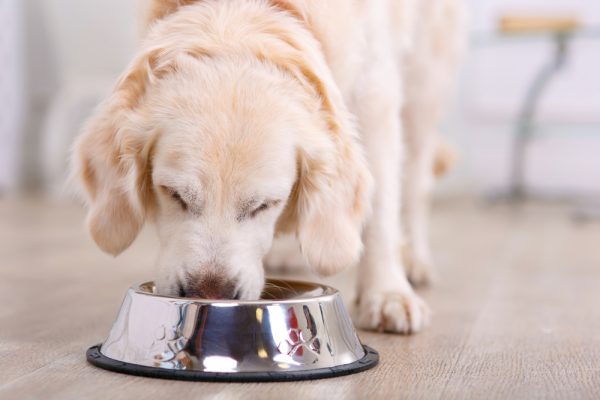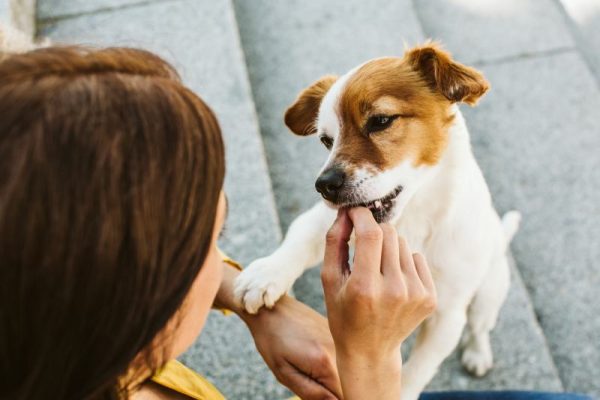All dogs have their own characteristics and traits, and that includes the ears. Some dogs have drop ears, long and floppy ears, rose ears, cropped ears, bat ears, and other odd shapes. Then, of course, there are the dogs with button ears. What are button ears anyway? And what do they look like? Button ears are folded, meaning the top flap of the ear folds down, covering the ear canal.
Dogs with this genetic trait are typically part of the terrier group, but not always.1 In this guide, we’ll list 10 dog breeds with button ears and explain their origins, history, and more.

How Are Dogs With Button Ears Classified?
A button ear is classified as a dog ear that folds over the opening of the ear canal, typically seen in dog breeds with shorter ear canals. The top half of the ear folds over, forming a flap; however, the bottom half stands erect. The folded portion resembles a flap of a shirt with button-down pockets. Because of this they are also often referred to as dogs with folded ears.
The 10 Dogs With Button Ears
1. Welsh Terrier

| Origin: | Wales |
| Lifespan: | 12 to 15 years |
| Height: | 15 inches |
The Welsh Terrier hails from Wales and was bred for hunting foxes, badgers, otters, and rodents. They are relentless in their quest for hunting and will hunt in any terrain for however long it takes to chase prey. They have a sturdy and compact build with sharp teeth and, of course, button ears.
Welsh Terriers have longer legs than their smaller counterparts, and they primarily dig to catch their prey rather than burrow into holes. Black and tan are the sole color combinations, and they were recognized by the American Kennel Club (AKC) in 1888.
2. Airedale Terrier
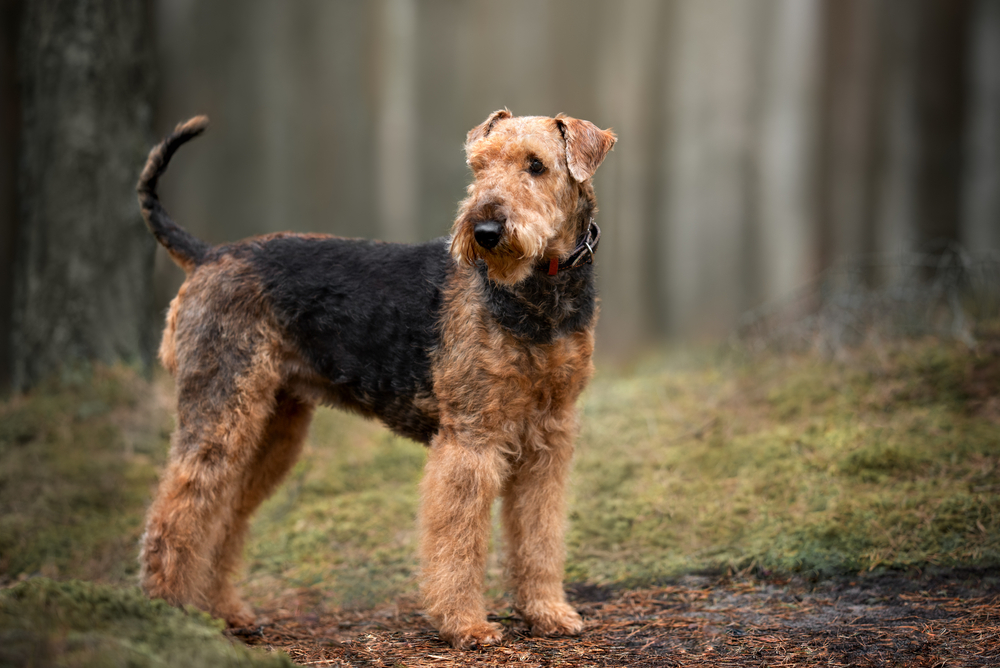
| Origin: | Aire River Valley in England |
| Lifespan: | 11 to 14 years |
| Height: | 23 inches |
Nicknamed the “The King of Terriers,” the Airedale Terrier is much larger than the Welsh Terrier and is regarded as a highly spirited, exceptional hunter. Given their strength and size, they are considered one of the world’s most versatile breeds for hunting, athleticism, and family companionship. They are the largest of all terrier breeds, standing 23 inches at the shoulder.
In their native England, they hunted large rats, and rather well, we might add, so much so that they often competed in rat hunting contests, which attracted many spectators. These terriers even served in the British military during World War I, where they carried messages between troops and commanding officers in the trenches.
3. Manchester Terrier (Standard)
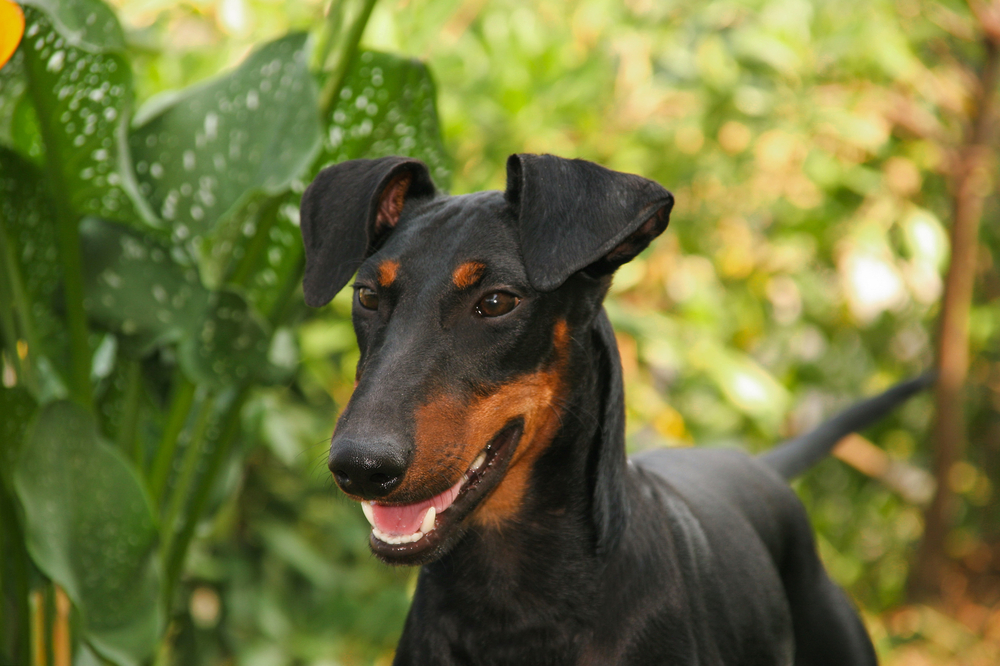
| Origin: | England |
| Lifespan: | 15 to 17 years |
| Height: | 15 to 16 inches |
The standard Manchester Terrier is bright, spirited, and extremely athletic. Named after the English city from which they were bred in the 1800s, they were used for rat-baiting, which was an inhumane bloodsport made popular in Manchester’s textile industry among mill workers. Due to their wit, intelligence, and spunk, they quickly became known for companionship once the blood sport was deemed inhumane in the 20th century.
They come in two sizes: standard, which is a part of the terrier group, and toy, which is part of the toy group in the AKC. The coat is black with distinct mahogany markings, and the body is muscular and compact. They are also known for their speed, which proved handy in catching rats.
4. Russell Terrier

| Origin: | England |
| Lifespan: | 12 to 14 years |
| Height: | 10 to 12 inches |
The Russell Terrier is energetic, upbeat, and curious. They are kind-hearted dogs who require much exercise, and they are loyal and fun dogs to have as companions. Despite their small stature, they are not afraid to tell a much bigger dog to back off. They were developed in England in the 19th century for hunting small game.
The breed was named after Reverend John “Jack” Russell, an avid hunter. Legend has it that the reverend’s milkman always had a small white dog with dark spots who tagged along on his routes. Russell ended up purchasing the dog—the rest is history.
Eventually, the breed continued its development in Australia. Over time, their energetic and fun personalities caught wind in the United States, where they are still a popular terrier breed to own.
5. Parson Russell Terrier

| Origin: | England |
| Lifespan: | 13 to 15 years |
| Height: | 13 to 14 inches |
Like other terriers, the Parson Russell Terrier was bred for hunting in 1800s England; however, while most terriers during the era were bred for hunting rats and other rodents, the Parson Russell Terrier was bred for hunting foxes. They, too, were named after Reverend John “Jack” Russell, who was also known as “The Sporting Parson,” hence the name. These dogs have boundless energy and are playful, fun-loving dogs to own.
The AKC recognizes both the Russell Terrier and the Parson Russell Terrier, but another terrier in the group, the Jack Russell Terrier, is not. After the reverend’s death, the name “Jack Russell” was used to describe all hunting terriers, but the Jack Russell was bred more for companionship rather than a working breed.
The Jack Russell Terrier Club of America made the decision not to include them in the AKC for fear the inclusion would take away from the hard-working breed standard. Nonetheless, all of these terrier breeds have button ears.
6. Smooth Fox Terrier

| Origin: | England |
| Lifespan: | 12 to 15 years |
| Height: | 15½ inches |
The Smooth Fox Terrier, known as the “gentleman of the terrier world,” is a friendly dog with a streak of independence. They have a striking appearance, with a long head in the shape of a V, along with button ears.
Cousins of the Wire Fox Terrier, these energetic dogs were bred for fox hunting, in which they drive foxes out of their burrows so hounds can give way to chase them. They have a smooth, dense, predominantly white coat with moderate markings. These dogs make excellent family companions but do have a mischievous streak, keeping their owners on their toes.
7. Border Terrier
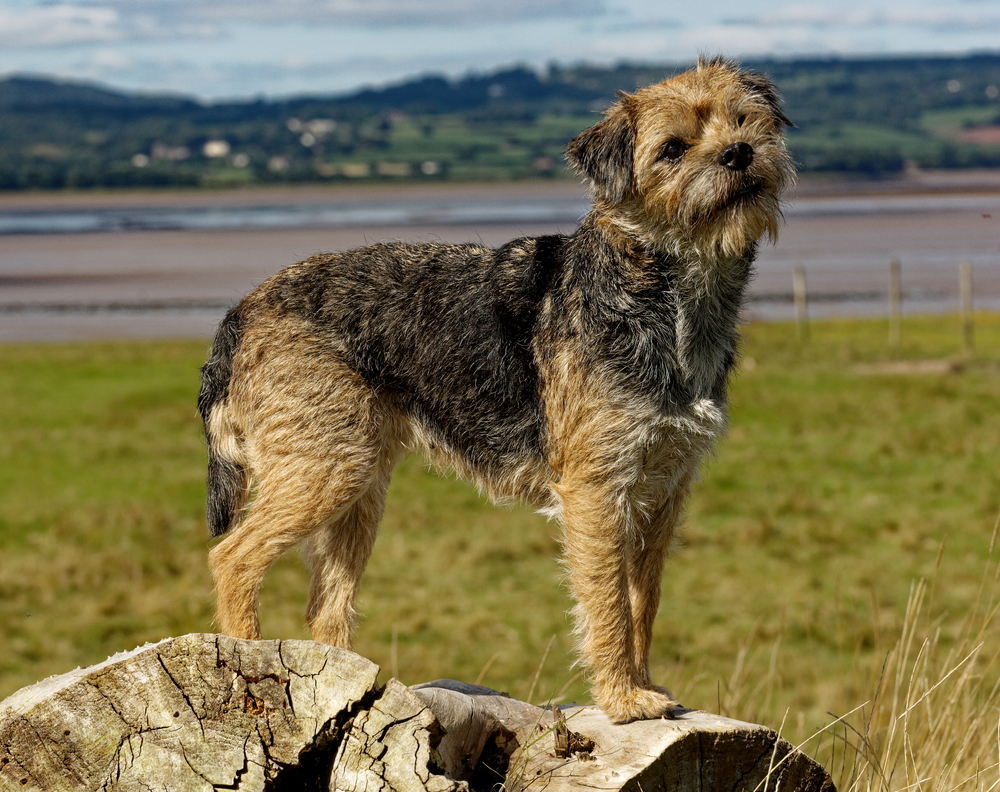
| Origin: | Scottish-English border region |
| Lifespan: | 12 to 15 years |
| Height: | 12 to 15 inches |
The Border Terrier was developed in the 19th century and was desired by farmers to keep foxes away from their sheep. These terriers have longer legs than their smaller counterparts, and they have wiry coats. They are happy and affectionate little dogs with uniquely shaped heads, often called “otter heads” by fanciers.
The wiry coat comes in blue and tan, grizzle and tan, wheaten, or red. They are hard-working dogs, often described as “hard as nails,” but when they are not working, they love to spend time with their humans.
8. Lakeland Terrier
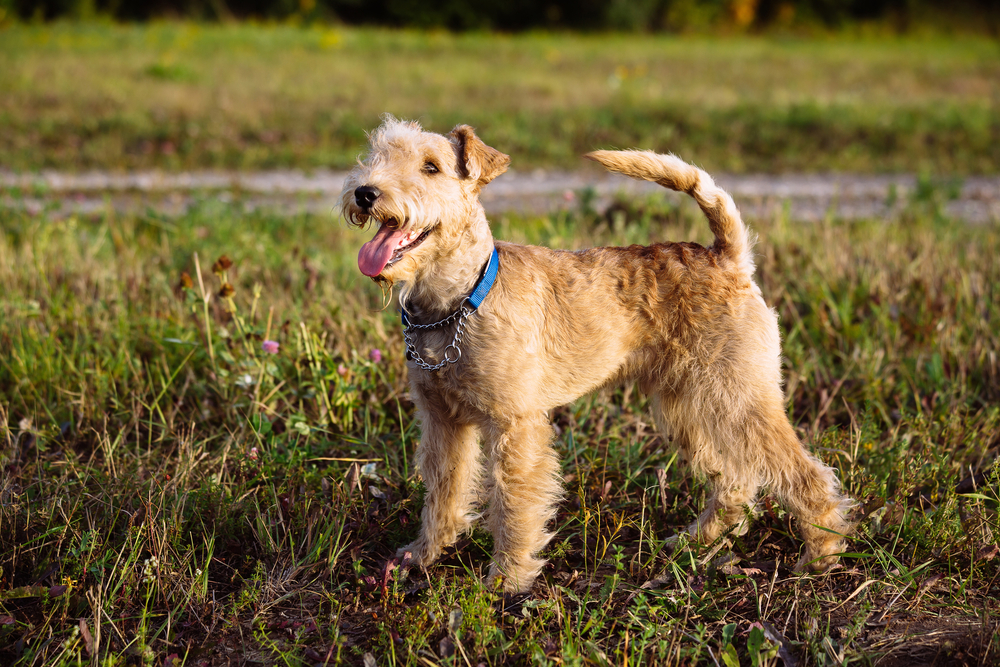
| Origin: | Lake District of Cumberland, England |
| Lifespan: | 12 to 15 years |
| Height: | 14 to 15 inches |
Like the Border Terrier, the Lakeland Terrier was a farmer’s choice in the 1800s to keep foxes away from their sheep. These little dogs do not look at themselves as small, as their big personalities do not match their small size. They are compact and weigh roughly 17 pounds. These dogs are intelligent and have a zest for life.
What’s striking about these dogs is their appearance. Not only do they have button ears, but they also have a straight front rectangular head with fluff at the end of the snout, resembling a beard. They have a wiry coat that comes in many color variations: grizzle and tan, red, red grizzle, blue and tan, liver and tan, wheaten, black and tan, and solid liver. However, the most common colors are grizzle and tan, black and tan, and red.
9. Irish Terrier
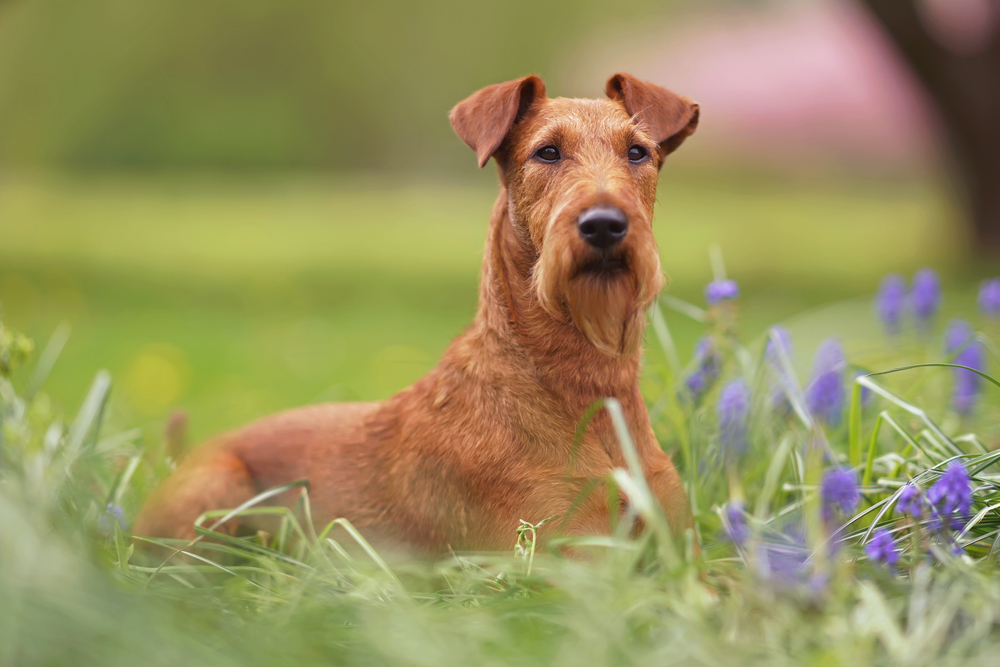
| Origin: | Ireland |
| Lifespan: | 13 to 15 years |
| Height: | 18 inches |
The Irish Terrier is thought to be one of the oldest terrier breeds, and much like most terriers, they are descendants of the now-extinct Black and Tan Terrier. They gained popularity among farmers for their strong work ethic, bravery, and adaptability. They have been used for hundreds of years on farms and estates in Ireland, and they are known as the “gentleman’s favorite.” They stand roughly 28 inches at the shoulder and weigh up to 27 pounds.
Bold, dashing, and tenderhearted, these dogs are sturdy yet graceful, with a long, narrow head, a whiskery beard, and bushy eyebrows.
10. Australian Shepherd
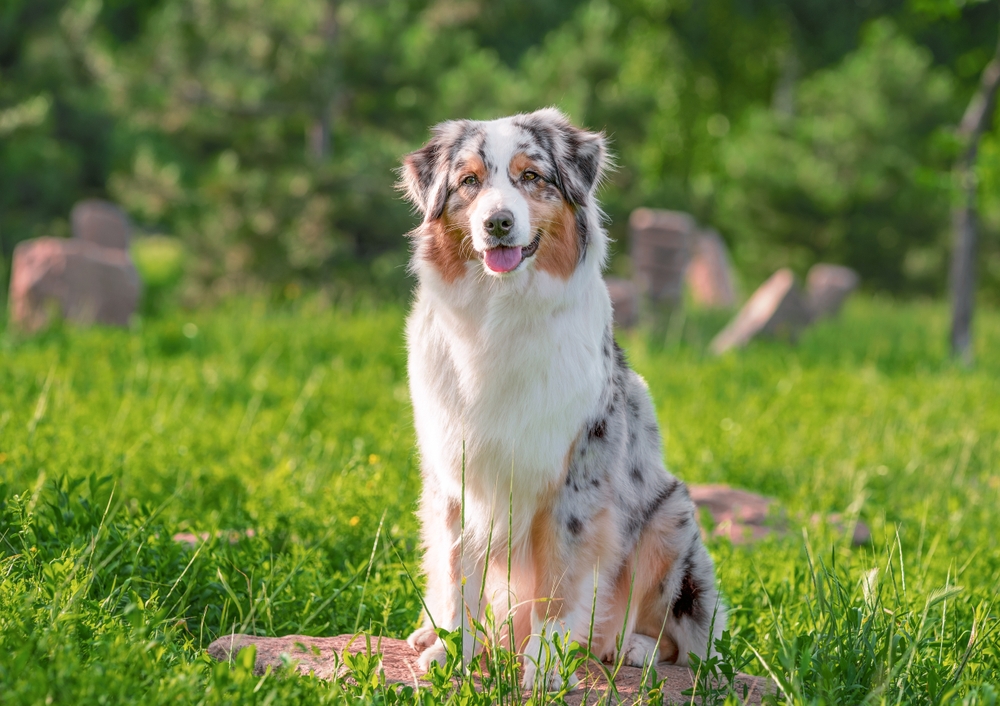
| Origin: | United States |
| Lifespan: | 12 to 15 years |
| Height: | 18 to 23 inches |
The Australian Shepherd is known as a lean and tough ranch dog. They can have button ears, but some have rose ears. Despite the name, they were developed in the United States, but their history is more complex than that. They are descendants of the European herding dog and lived in the Pyrenees Mountains.
During the 1800s, indigenous Basque people took their dogs to the land down under in search of more cattle land. There, these dogs were crossed with the Border Collie and other dogs of Australia. They eventually made their way to California, where ranchers assumed they originally hailed from Australia, hence the name. They are intelligent and hard-working, and they require much mental and physical stimulation.

In Conclusion
Dogs with button ears are easily recognizable, with the top part of the ear folded down in an adorable way. Most dogs with this trait are terriers, which may come in handy while digging, as button ears cover the ear canal, which can aid in keeping dirt out. If you ever see a dog with the top part of the ear folded down, now you know that that is a button ear!
Featured Photo Credit: Mariya Kuzema, Shutterstock


